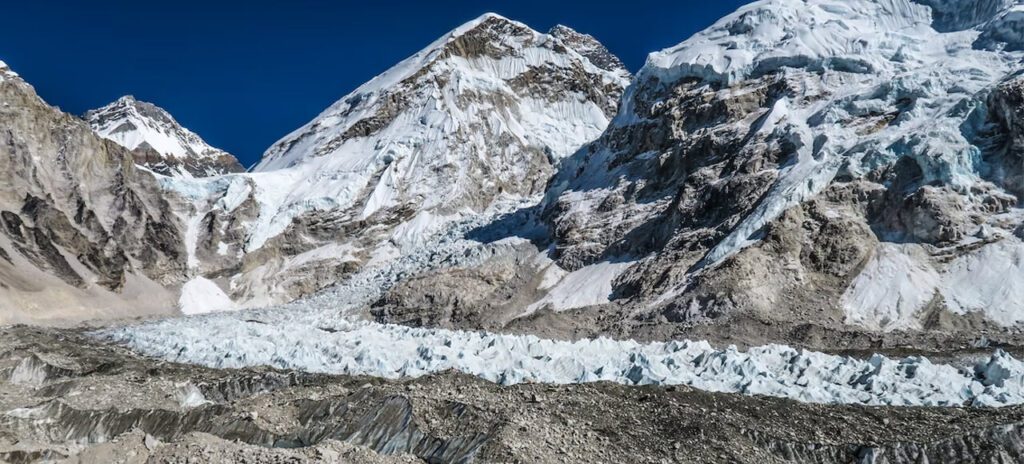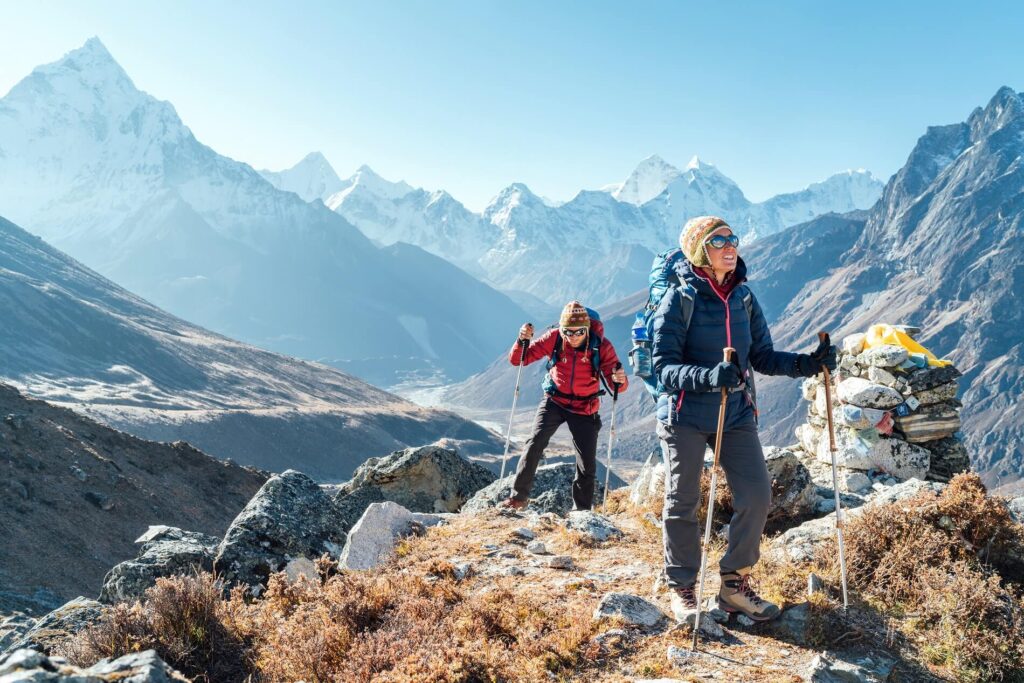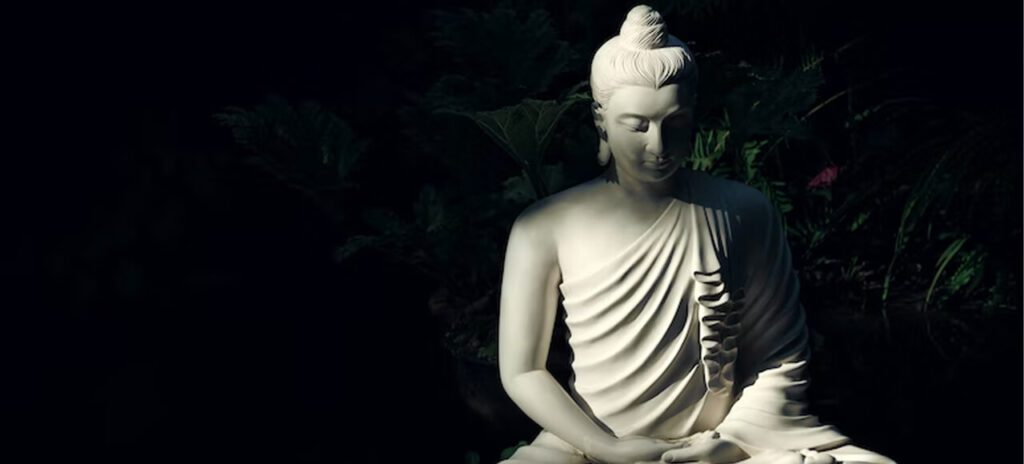Mount Everest Base Camp, located in the Khumbu region of Nepal, is a renowned trekking destination. May is an excellent time to visit Everest Base Camp. Because the weather is typically stable, skies are clear, and temperatures are mild. This month marks the beginning of the peak trekking season, where the weather is relatively stable.
Plan Your May Everest Base Camp Trek: Essential Weather Info
The weather at Everest Base Camp in May can be unpredictable and challenging. May is the beginning of the climbing season in the Himalayas, and the weather can be highly variable. The temperatures during the day can range from 10 to 20 degrees Celsius (50 to 68 degrees Fahrenheit). However, at night, temperatures can drop well below freezing. You can expect the temperature to get as low as minus 20 degrees Celsius (-4 degrees Fahrenheit). Cold weather throws a wrench in camping and sleeping, especially for climbers unaccustomed to it.
Read More: Everest Base Camp in April – Temperature, Weather, Clothing, & Travel Tips
May offers a window of opportunity to climb Mount Everest. Stable weather with fewer storms compared to earlier months makes it a tempting climb. However, it might not be as peaceful as it seems. Preparation for snow, high winds, and other harsh conditions remains crucial for climbers. At Everest Base Camp, climbers also need to be aware of the thin air and reduced oxygen levels. This can be physically more challenging and can increase the risk of altitude sickness. It can be a life-threatening condition if not treated quickly.
Ideal Time to Hike? Everest Base Camp Temperatures in May
The average temperature at Everest Base Camp in May can range from around -5°C (23°F) to 15°C (59°F) during the daytime. Everest Base Camp’s high altitude, at roughly 5,364 meters (17,598 feet), brings colder temperatures as elevation rises. While daytime temperatures at Everest Base Camp can be quite pleasant, the temperature can drop rapidly as the sun sets, often reaching nighttime lows of -20°C (-4°F) or lower.

To ensure protection from the cold, it’s essential to have warm clothing and gear that can provide adequate insulation even in the coldest temperatures. Get ready for anything! May weather at Everest Base Camp can throw snow, strong winds, and other wild surprises your way. As a result, it’s crucial to keep up with weather updates and be ready to revise your plans as necessary.
Also Check: Everest Base Camp Route – From Tenzing Hillary route to Heli ride
Everest Base Camp in May: How Busy Does It Get?
Scaling Mount Everest is a goal that is on the bucket list of many individuals, owing to the thrill and excitement that it offers. Calling all adventurers! Everest Base Camp is an epic journey you won’t want to miss. For decades, climbers and trekkers have traveled to Mount Everest, the highest peak on the globe. May is the start of the climbing season in Nepal, and it is the best time to climb Mount Everest. One of the most well-known treks in the world, the journey to Everest Base Camp (EBC) draws thousands of tourists each year. The weather is relatively stable, with clear skies and low winds, making it easier to climb.

As a result, May is also the busiest month at EBC, with a large number of trekkers and climbers converging on the camp. The crowds at EBC in May can be overwhelming. Lots of hikers and porters carrying climber supplies crowd the narrow paths to Everest Base Camp. Teahouses and lodges fill up quickly, making it tricky to find accommodations. The camping area also gets crowded, with tents pitched closely together.
Witness Serenity: Buddha Jayanti Festival at Everest Base Camp
Nepal celebrates many colorful festivals throughout the year! In May, they celebrate Buddha Jayanti, a special day to honor the Buddha.
Buddhists celebrate Buddha Jayanti, a major festival honoring their founder. Many call it Buddha Purnima. This special day celebrates the birth, enlightenment, and passing of Siddhartha Gautama, the founder of Buddhism. It falls on the full moon in the month of Vaisakha, which is usually in April or May. Buddhists believe all three of these life-changing events happened for Gautama on the same day!

The festival is celebrated with great enthusiasm. Buddhists all over the world participate in the celebration with a lot of fervor and devotion. At Buddhist monasteries and stupas, Buddhist people engage in praying, lighting lamps, and offering gifts to the Buddha. Additionally, many people observe meditation, fasting, and the recitation of Buddhist hymns.
In Kathmandu, the capital city of Nepal, the main celebration takes place at Swayambhunath Stupa, a UNESCO World Heritage Site and one of the most sacred Buddhist sites in the world. Thousands of devotees gather here to celebrate Buddha Jayanti and pay homage to the Buddha. The stupa is adorned with colorful prayer flags, and the surrounding streets are decorated with lights and banners.
Another important place of celebration is Lumbini, the birthplace of the Buddha, which is located in the southern part of Nepal. On this day, people from all over the world visit Lumbini to offer prayers and pay their respects to the Buddha.
Blooming Beauty: Witnessing Everest Base Camp’s Flora in May
Plants
Nestled in the heart of the Himalayas, Everest Base Camp is home to some of the most awe-inspiring flora in the world. In May, the region bursts into bloom with a riot of colors, transforming the stark mountain landscape into a tapestry of vivid hues. Here are some of the flora you can witness during your journey:
- Rhododendrons: The rhododendrons are one of the most spectacular flowers found in the Everest region. They come in various colors, ranging from pink, white, and purple to red. These beautiful flowers bloom in May, and their vibrant colors provide a beautiful contrast to the rugged mountain terrain. The rhododendrons are the national flower of Nepal and can be found in abundance throughout the trekking route. There are many varieties of rhododendrons that you can spot during your trek to Everest Base Camp.
- Primula: Primula is another beautiful flower that you can see during the trek to Everest Base Camp. They bloom in a range of colors, including yellow, pink, red, and purple. These delicate flowers grow in clusters and can be found in alpine meadows and along the banks of rivers.
- The Himalayan Blue Poppy: The Himalayan Blue Poppy is one of the rarest and most coveted flowers in the Everest region. It is a large, blue-violet flower that grows in rocky terrain at high altitudes. Alpine Aster: The Alpine Aster is a small, delicate flower that grows in rocky terrain at high altitudes. It blooms in May and has a beautiful purple color. These flowers can be found along the trekking route and are a beautiful sight to behold.
- Himalayan Edelweiss: The Himalayan Edelweiss is a small, white flower that grows in rocky terrain at high altitudes. It is a hardy flower that can withstand extreme weather conditions. The Himalayan Edelweiss is a symbol of purity and is considered a good luck charm by many trekkers. These flowers bloom in May and can be found along the trekking route.
Spot Wildlife in May: A Guide to Everest Base Camp Animals
Along with breathtaking views of the highest mountains in the world, the Everest Base Camp trek offers the chance to observe a variety of local wildlife. Even though the area is not renowned for its animal diversity, there are still a number of species that you might run into on your May trek to Everest Base Camp.
- Himalayan Tahr: The Himalayan Tahr is a goat-like animal that inhabits the mountains of the Himalayas. It is a highly adaptable animal that can survive in extreme conditions, including the cold and high altitudes of the Everest region. These animals can often be spotted grazing on the hillsides during the trek.
- Snow Leopard: The snow leopard is one of the most elusive animals in the world, and spotting one during a trek to Everest Base Camp is a rare and unforgettable experience. Snow leopards prowl the mountains of the Everest region, hunting prey like Himalayan Tahr and Bharal (Blue Sheep). However, spotting these elusive predators is a challenge.
- Red Panda: The red panda is a small, furry animal that inhabits the forests of the Himalayas. They are known for their distinctive red fur and bushy tail. These animals are arboreal, and you can spot them in the trees along the trekking route. They are most active during the early morning and late afternoon hours.
- Musk Deer: The Musk Deer is a small, deer-like animal that inhabits the mountains of the Himalayas. They are known for their distinctive scent glands, which are used to produce musk. These animals are shy and elusive, but you might be able to spot them grazing on the hillsides during the trek.
Discover Alternative Everest Region Treks for May
If you’re planning a side trek at Everest Base Camp in May, there are several options available to you depending on your interests, fitness level, and time constraints. Here are a few suggestions:
- Kala Patthar: This is a popular side trek that takes you to the highest point on the Everest Base Camp trek, offering stunning views of Mount Everest as well as other peaks like Lhotse and Nuptse. The trek starts from Gorak Shep and takes around 2–3 hours to reach the summit. The views from the top are truly breathtaking, especially at sunrise or sunset.
- Gokyo Lakes: Another popular side trek in the Everest region is the trek to Gokyo Lakes. This trek takes you through picturesque villages and pastures, eventually leading to a series of turquoise glacial lakes. The trek is challenging but rewarding and offers a unique perspective on the region.
- Annapurna Circuit Trek: The Annapurna Circuit Trek is a popular trekking route in the Annapurna region of Nepal. It is one of the most diverse treks in terms of landscapes and culture, taking you through lush green forests, arid deserts, and traditional Nepalese villages. The trek starts from Besishahar and follows the Marsyangdi River valley, passing through quaint Gurung and Tamang villages, with stunning views of the Himalayan peaks such as Annapurna, Manaslu, and Dhaulagiri. The trek usually takes around 16–21 days to complete, depending on your pace and itinerary. Experts recommend taking your time to acclimatize properly to the altitude to avoid altitude sickness.
Tips for Everest Base Camp in May
Trekking to Everest Base Camp is a challenging but rewarding adventure, offering stunning views of the world’s highest mountain range. Here are some tips to help make your Everest Base Camp trekking experience as enjoyable and safe as possible:
Plan Ahead: When planning a trek to Everest Base Camp, it’s important to research the trek and plan your itinerary carefully. This means taking into account the distance you will be trekking each day, the altitude you will be reaching, and the time you will need for adjustment. Choosing a reputable trekking company is also important. It is important to ensure that you choose a trekking company with experienced and qualified guides and porters, as they will be guiding you throughout your journey.
Stay Hydrated: Dehydration can worsen altitude sickness symptoms caused by oxygen deficiency at high altitudes. Drinking plenty of fluids can help prevent or alleviate the symptoms of altitude sickness. Dehydration can cause fatigue, weakness, and dizziness, which can make the trek even more challenging. Staying hydrated helps regulate your body temperature, making it easier to adjust to changes in the environment.
Pack wisely: When trekking to Everest Base Camp, it is crucial to pack wisely as you will be traveling in a developing country with limited resources, which is even more apparent in the mountain region. Ensure that you have packed everything you need without the burden of excess weight.
Plan Your Everest Base Camp Trek: Weighing the Pros & Cons of May
Pros
The Everest Base Camp Trek is an adventurous trek that takes you through some of the most jaw-dropping landscapes and mountain scenery in the world. People consider May one of the best times to undertake the trek for the following reasons:
- Weather: May is one of the months with the best weather conditions for trekking in the Everest region. The temperatures are mild, the skies are clear, and there is less chance of rainfall, making it easier to trek through the mountainous terrain.
- Scenery: May is the month when the rhododendrons, the national flower of Nepal, are in full bloom, making the forests and valleys of the region incredibly beautiful. The views of the snow-capped peaks, including Mount Everest, are also unobstructed due to clear skies.
- Festivals: The month of May also coincides with some of the most important festivals in Nepal, such as Buddha Jayanti and the Sagarmatha (Everest) Festival. These festivals offer a glimpse into the local culture and traditions of the region, making the trek even more memorable.
Cons
Even though May sees high trekking activity in Nepal, embarking on the Everest Base Camp Trek during this month presents several drawbacks, outlined below:
- Crowds: May is one of the busiest months for trekking in Nepal, and the Everest Base Camp Trek is no exception. Crowds often fill the trekking trails, particularly around popular spots like Namche Bazaar, Dingboche, and Gorak Shep. The crowds can be overwhelming and can take away from the peaceful experience that trekking in the mountains should provide.
- High altitude sickness: The Everest Base Camp Trek involves hiking to a high altitude of 5,364 meters above sea level, which can be challenging for some trekkers. Warmer temperatures in May increase the risk of altitude sickness, leading to dehydration and making it harder for the body to adjust to altitude.
- Higher costs: As May is a peak season for trekking in Nepal, the costs of accommodations, food, and transportation are higher. This can make the trek more expensive for budget-conscious travelers.







